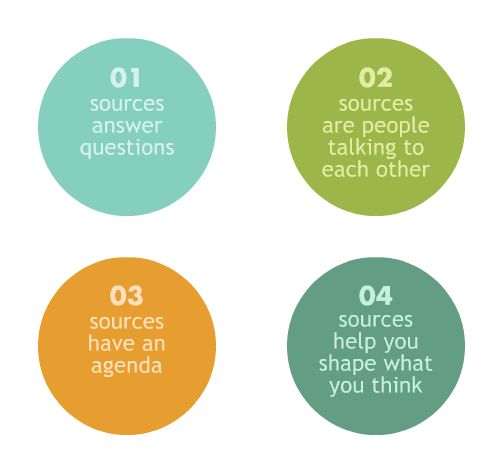A Review of i-cite and i-claim
James P. Purdy
Multimedia Affordances [1 2 3 4]
Through its discussion and use of sources, i-cite emphasizes that sources themselves are not intrinsically good or bad (a sentiment expressed in numerous print composition texts in the admonition that Web sources are inappropriate for academic work) but that sources can have value for a variety of research-related activities. Downs focuses on what sources do and what researchers can do with them. He explains, in outlining the foci of the CD's tutorials, "sources answer questions, sources are people talking to each other, sources have an agenda, and sources help you shape what you think" ("How i-cite Works"; see figure 1). In this way, he presents sources as more than a product to be cited. That is, even if sources are not accepted as "scholarly," they can still be useful resources in shaping how researchers think about a subject. Tutorial #4 (sources help you shape what you think), in particular, emphasizes this role of sources. Instructional texts that forbid consultation of this wider range of sources relegate sources to only one role: a product to cite. For Downs, however, sources can serve other roles in developing a researcher's thinking. Such an approach is more consistent with the idea, expressed thirty years ago by Janet Emig (1977), that writing is a mode of thinking. With i-cite Down reminds us that research is a process of engaging with multiple sources for multiple purposes. Students who can negotiate these sources and purposes -that is, students who view research as a process of developing ideas from sources rather than simply finding the right textual products to cite to support their ideas-are more likey to be successful researchers in and outside of the academy.
Figure 1: i-cite's Tutorials


